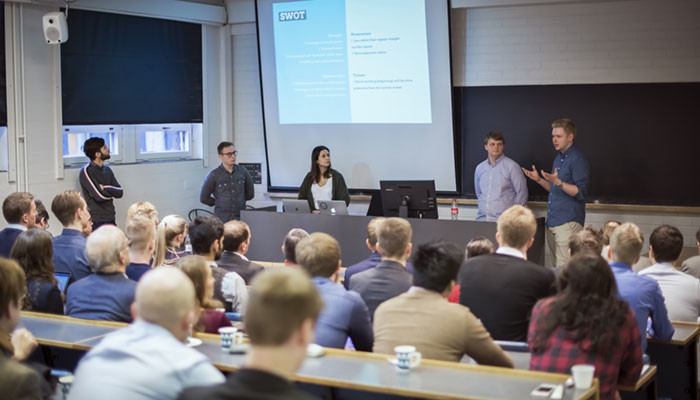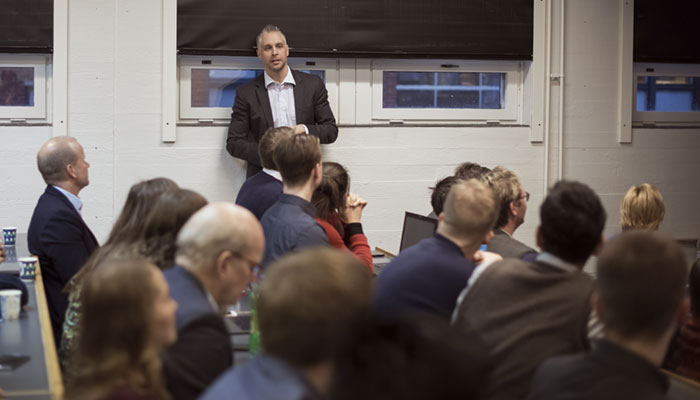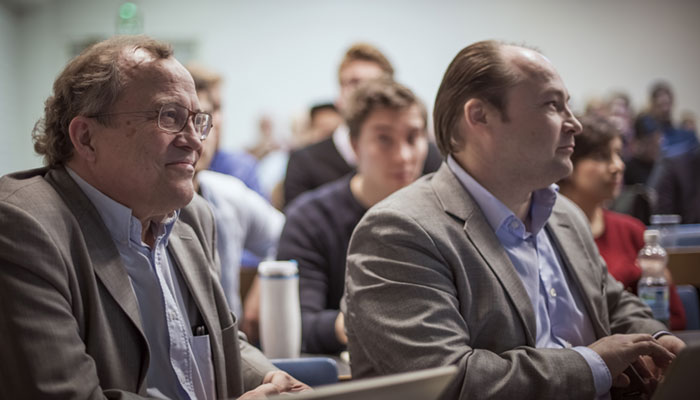Marine Technology students develop the ships of the future
The future's shipbuilders broke down barriers at the Marine Technology Gala.

The School of Engineering's traditional Marine Technology Gala was a litmus test for students. The audience comprised 40 marine technology industry representatives, who commented on the results of work students had completed over the course of 12 weeks and checked out the competence of future shipbuilders.
When two extra stories of cabins are added to a Caribbean cruise ship, an additional 750 passengers can fit on board. This a how a group, whose design was based on the utilisation of high-strength steels in building decks, welding techniques that reduce the weight of structures and a cabin module that allows for the better utilisation of space, presented their work.
'We really had to buckle down and work hard on this, but at the same time it was rewarding to look into things and speak with professors. We had to think about structure in more in-depth detail than we had during the courses we had taken thus far,' explains student Iiro Vanne.
Student Mikk-Markus Imala's team presented a concept for a cruise ship to sail along the East Coast of the United States, with facilities that are designed completely for meeting and conference use.
A conference ship is a new way to arrange business meetings, fairs and conventions. The ship combines work and networking in facilities, which have been designed for its passengers' comfort,' Imala describes.
Students also addressed a worldwide problem: the enormous amount of plastic waste floating in the seas. The mission of the Baltic Cleaner ship is to clean the Baltic Sea of plastic in summer and act as an icebreaker during winter.
The Finland 100 jubilee vessel was inspired by Finland's industrial innovations and nature. On the other hand, a team, which considered a new type of space utilisation in cruise ships, took into account the various need of passengers in their leisure time and presented a modular cabin concept that can be tailored for these.
Recruitment of top experts
The teaching of marine technology studies at Aalto University is consistently problem-based and the topics of project work arise from industry.

'Shared events offer industry the opportunity to recruit new experts to the field, where career prospects for students look promising' says Professor Jani Romanoff.
'The course work contained an abundance of good ideas, which are worth further developing. Students have the courage to approach things from new angles without prejudice and without old burdens,' states Niko Rautiainen, Senior Vice President of Design at the Archtech Helsinki Shipyard.
MarineCycles Oy Business Development Executive Vesa Marttinen encourages students to take up entrepreneurship in this global sector, which offers endless opportunities. Finland's recent marine cluster innovations have predominantly been introduced by startup companies.
'Students are able to challenge existing models of thinking with bold initiatives. These exceptional young people are the future professionals of the marine technology industry,' Marttinen states.
Strong, long-term cooperation between teaching and industry has helped Finland's marine technology industry prosper.

Professors Pentti Kujala and Heikki Remes.
'Marine technology has no future without excellent research. Research allows us to offer better teaching and to educate the changemakers of the future,' says Professor of Marine Technology Pentti Kujala.
Marine technology research at Aalto University ranked 39th in the world in the respected Shanghai ranking, which is quite the feat for a research unit with 3–5 professors.

